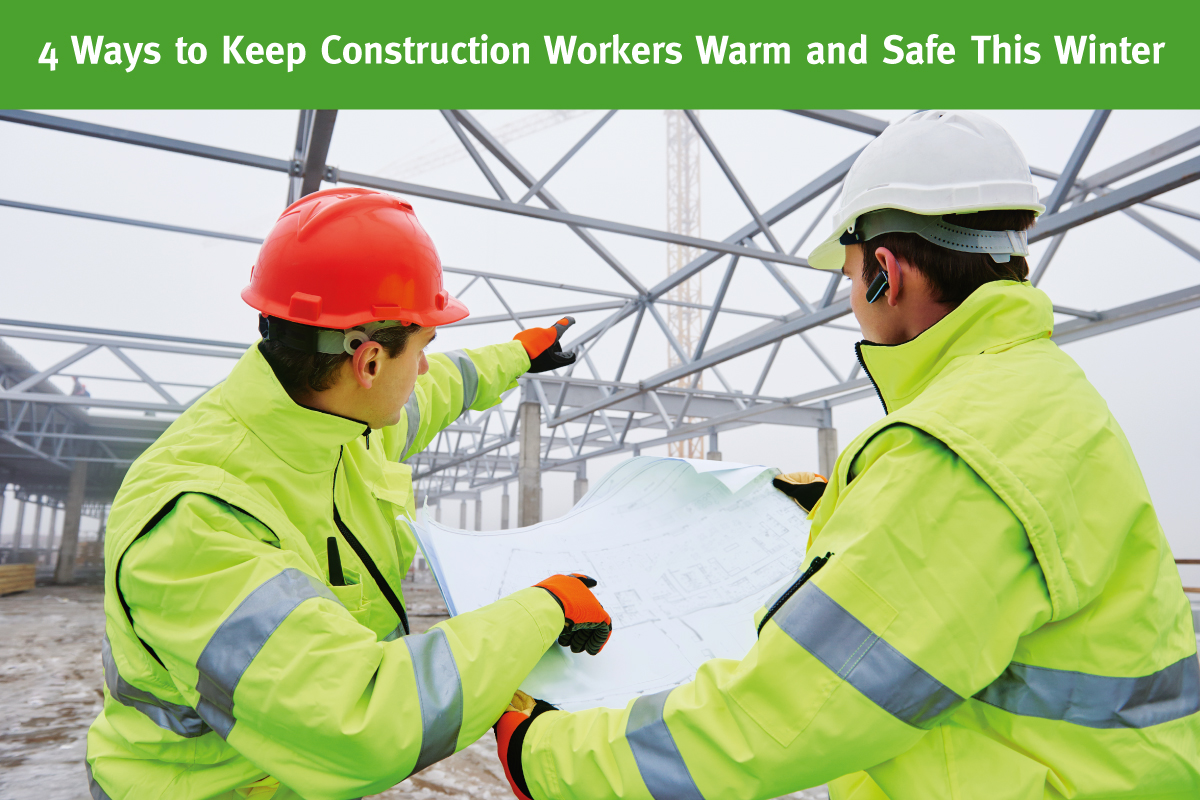Winter is just around the corner, which is more challenging for construction sites. Freezing temperatures, strong winds and wet conditions increase the risk of accidents, which may cause serious injuries. Workers in cold weather are also exposed to health problems, including hypothermia and frostbite.
Foremen and contractors are responsible for keeping their employees warm and safe on the site during poor weather. Winter safety within construction requires investment in the safety and health of employees.
Maintain safety on your construction site this winter with these four cold weather guidelines.
1. Coach workers on appropriate clothing and PPE
It is the most critical precaution to minimise your workers’ cold-related stress. They should wear three or more layers of clothing to preserve body heat, depending on the temperature and wind. Workers should avoid tight-fitting clothes because they restrict blood flow throughout the body.
The mouth, neck, face and head should be covered in a way that doesn’t prevent the worker from seeing clearly. Glasses and anti-fog glasses help protect their vision during windy conditions.
Workers should also wear insulated gloves to prevent numbness in the fingers and hands, allowing them to do their work properly. Waterproof boots should be mandatory as well. These prevent the toes and feet from getting wet, preventing frostbite.
2. Set up a warming area
The likelihood of developing frostbite increases as the temperature drops. If the outdoor conditions get too extreme to continue working, site managers should allow workers to rest in warming stations before their health suffers.
Procure set-up and safety materials for construction sites so you can provide a warm break area for your workers. You can add a small on-site kitchen with canteen appliances. Encourage employees to use hot drink stations and space heaters to warm up after working outside.
Rotate staff frequently in winter and provide more rest breaks to prevent cold stress from setting in.
3. Prep the site properly to avoid accidents
The construction site can be slippery and wet, increasing the risk of slips and falls. This danger makes it difficult for people to get around the area. Create dedicated walkways and pathways to give your workers a safe space to walk and safely move around the site. You can do this by de-icing the ground through gritting.
Adding sloped roofs above high-traffic walkways can also prevent the ground from getting wet and slippery.
Slippery surfaces increase the importance of waterproof, slip-resistant boots. These have more grip and traction on the soles of the shoes, reducing the likelihood of falls and other accidents.
4. Winter proof vehicles and equipment
Finally, inspect all work vehicles and equipment to ensure they can function under winter conditions. You may use an anti-freeze tool lubricant on your pneumatic tools to protect them from cold damage. Don’t forget to winterise hydraulic fluids and engine oils. Otherwise, the equipment might fail or malfunction.
Equip every vehicle on site with the appropriate gear and accessories. These could include snow tires, spare tires, jump leads, tow straps and chains.
Extra caution should be observed during winter. Construction sites are dangerous year round, with sharp debris, complicated power tools and other hazards. But when you add snow and freezing temperatures to the mix, your workers are exposed to increased risks. It’s the responsibility of everyone on site to ensure safety and well-being on site.
Source only high-quality protective equipment and gear from reputable distributors.
High-Quality Safety Work Wear and Equipment
Bryson has been providing contractors with temporary protection and safety products since 1974. Serving the PPE needs of various industries, we offer top-quality personal protective equipment that helps people work safely.
Call us on 020 8660 9119 or send an email to sales@bryson.co.uk for more information on our products.


